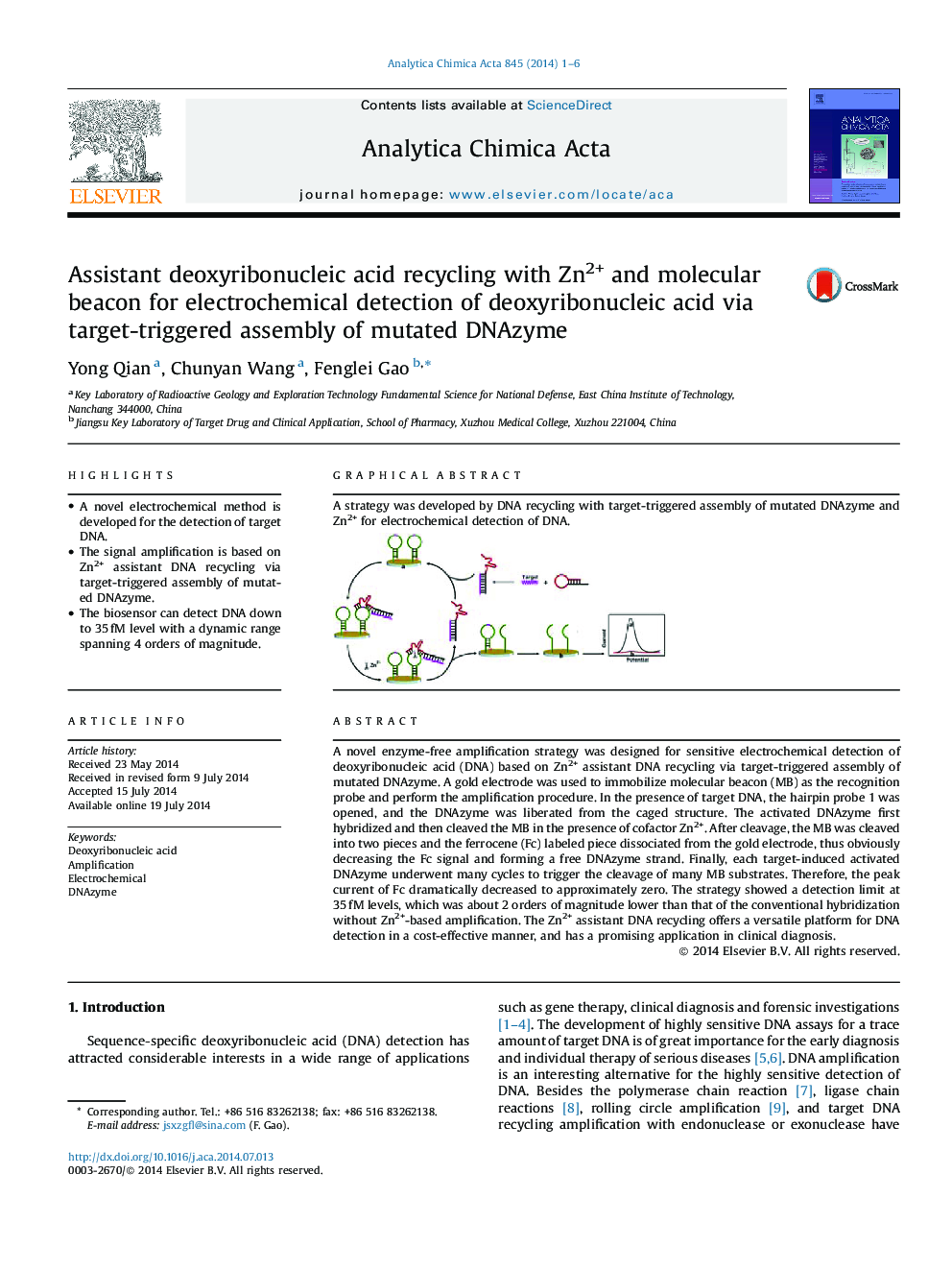| Article ID | Journal | Published Year | Pages | File Type |
|---|---|---|---|---|
| 1164406 | Analytica Chimica Acta | 2014 | 6 Pages |
•A novel electrochemical method is developed for the detection of target DNA.•The signal amplification is based on Zn2+ assistant DNA recycling via target-triggered assembly of mutated DNAzyme.•The biosensor can detect DNA down to 35 fM level with a dynamic range spanning 4 orders of magnitude.
A novel enzyme-free amplification strategy was designed for sensitive electrochemical detection of deoxyribonucleic acid (DNA) based on Zn2+ assistant DNA recycling via target-triggered assembly of mutated DNAzyme. A gold electrode was used to immobilize molecular beacon (MB) as the recognition probe and perform the amplification procedure. In the presence of target DNA, the hairpin probe 1 was opened, and the DNAzyme was liberated from the caged structure. The activated DNAzyme first hybridized and then cleaved the MB in the presence of cofactor Zn2+. After cleavage, the MB was cleaved into two pieces and the ferrocene (Fc) labeled piece dissociated from the gold electrode, thus obviously decreasing the Fc signal and forming a free DNAzyme strand. Finally, each target-induced activated DNAzyme underwent many cycles to trigger the cleavage of many MB substrates. Therefore, the peak current of Fc dramatically decreased to approximately zero. The strategy showed a detection limit at 35 fM levels, which was about 2 orders of magnitude lower than that of the conventional hybridization without Zn2+-based amplification. The Zn2+ assistant DNA recycling offers a versatile platform for DNA detection in a cost-effective manner, and has a promising application in clinical diagnosis.
Graphical abstractA strategy was developed by DNA recycling with target-triggered assembly of mutated DNAzyme and Zn2+ for electrochemical detection of DNA.Figure optionsDownload full-size imageDownload as PowerPoint slide
